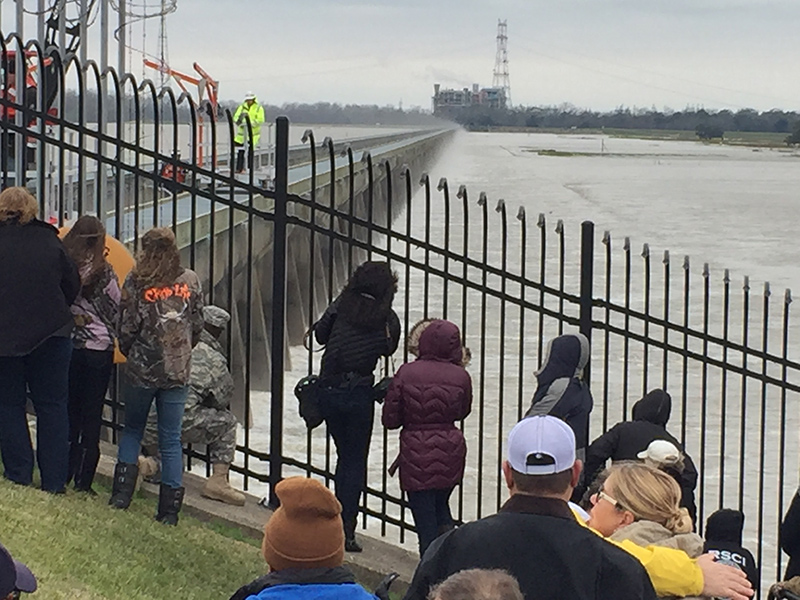The Bonnet Carré Spillway, located in St. Charles Parish, allows flood waters from the Mississippi River to flow into Lake Pontchartrain and then into the Gulf of Mexico. It has been opened 16 times since its construction in 1937 — four times since March 2018. In 2019, an unprecedented volume of water was released through the structure, nearly 31 million acre-ft (which means that 31 million acres area covered with 1 foot of water).
Opening the spillway relieves pressure on levees that protect about one million people in southeast Louisiana from flooding and allows the Corps to maintain river stages and regulate river flow downstream from the spillway.
The Tulane study was conducted by Ehab Meselhe, a professor in the Department of River-Coastal and Science Engineering who helped build numerical models used in Louisiana’s 2012 and 2017 Coastal Master Plans.
He said environmental challenges resulting from the recent and frequent operation of the spillway by the U.S. Army Corps of Engineers underscores the urgency of identifying alternatives to improve river management and confront the new normal of more frequent river floods, including solutions to reduce the magnitude and duration of spillway openings with effects on wildlife, seafood production, coastal communities and economies.
“In 2018, 2019 and 2020, it was the first time ever that the spillway was opened in three consecutive years. And in 2019 it was also the first time ever for the spillway to be opened twice in the same calendar year,” Meselhe said.
“And every time it operates, especially if it operates in the summer or late spring, when temperatures are high, there is an impact on water quality.”
Science indicates that climate change might cause more frequent floods on the Mississippi River, requiring more regular openings of the Bonnet Carré Spillway. To confront this new normal, Restore the Mississippi River Delta, a group of nonprofit conservation organizations asked Meselhe to explore solutions for improving river management that are currently proposed as part of Louisiana’s Coastal Master Plan. Meselhe modeled how three river diversions planned north of the Bonnet Carré Spillway can be operated to relieve pressure and reduce the volume of water flowing through the spillway, while also restoring coastal ecosystems. The organizations include Environmental Defense Fund, which funded the study, along with Lake Pontchartrain Basin Foundation, the National Wildlife Federation, Coalition to Restore Coastal Louisiana, and National Audubon Society.
The study — the first of the phases — uses digital models to simulate several diversions as possible flood control outlets. They include Ama North, Ama, Union and River Reintroduction in Lake Maurepas. Due to its small size, Maurepas had little impact but Ama North and Union, both individually and jointly, resulted in a noticeable reduction to the magnitude of the Carré pulse.
Specifically, when the Ama North and Union diversions are operated jointly, the reduction in the flow volume released through the BCS ranged between 57 percent and 61 percent, while reducing the duration of the opening from 143 days to 96 days.
The second part of the study will be a basin-side analysis designed to capture and quantify the potential benefits of using the upper river diversions as flood control outlets. The goal of such an analysis will be to examine the impact of the water quality and the potential environmental benefits to the wetlands and estuarine systems.
Original post https://alertarticles.info




